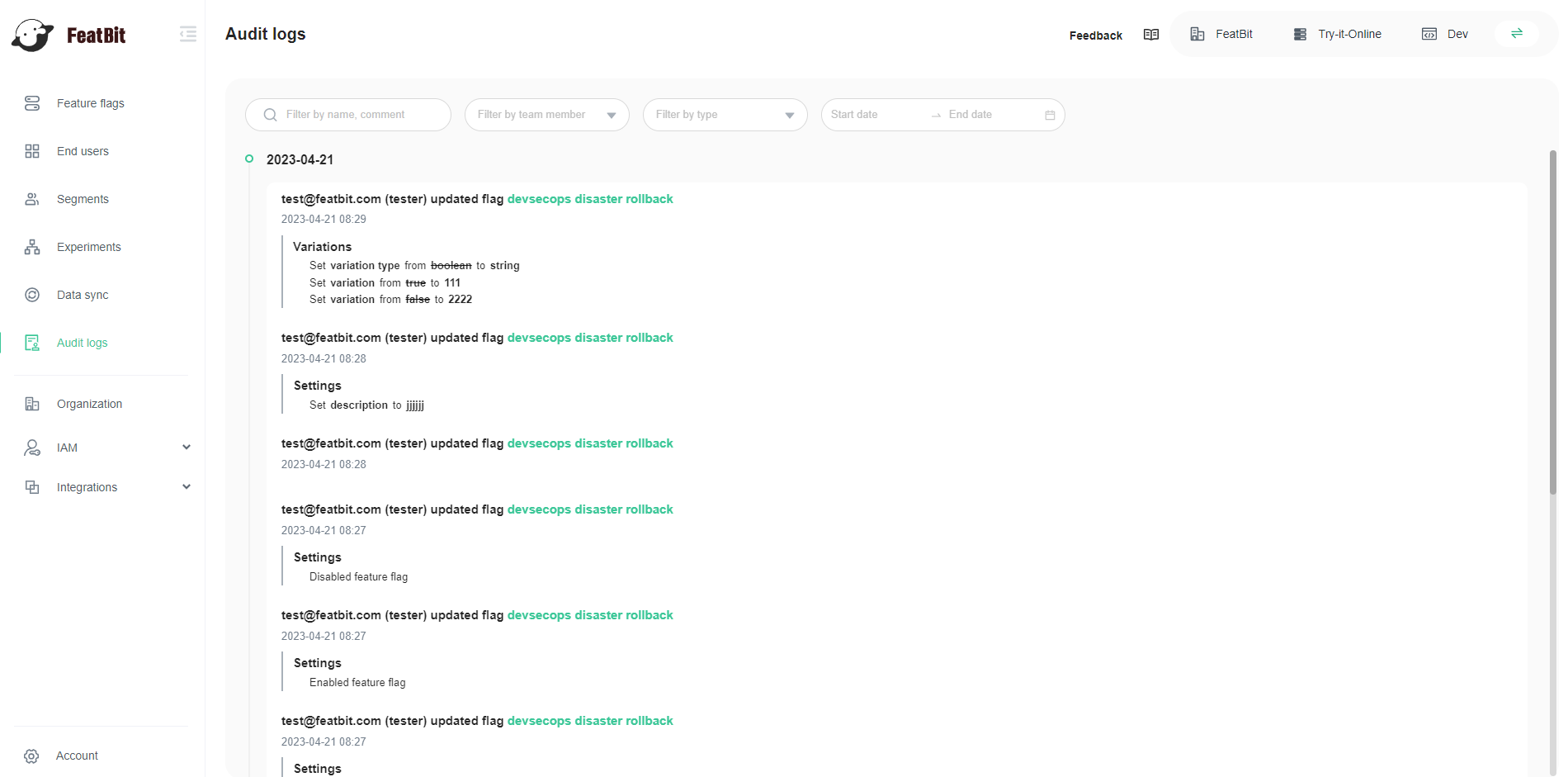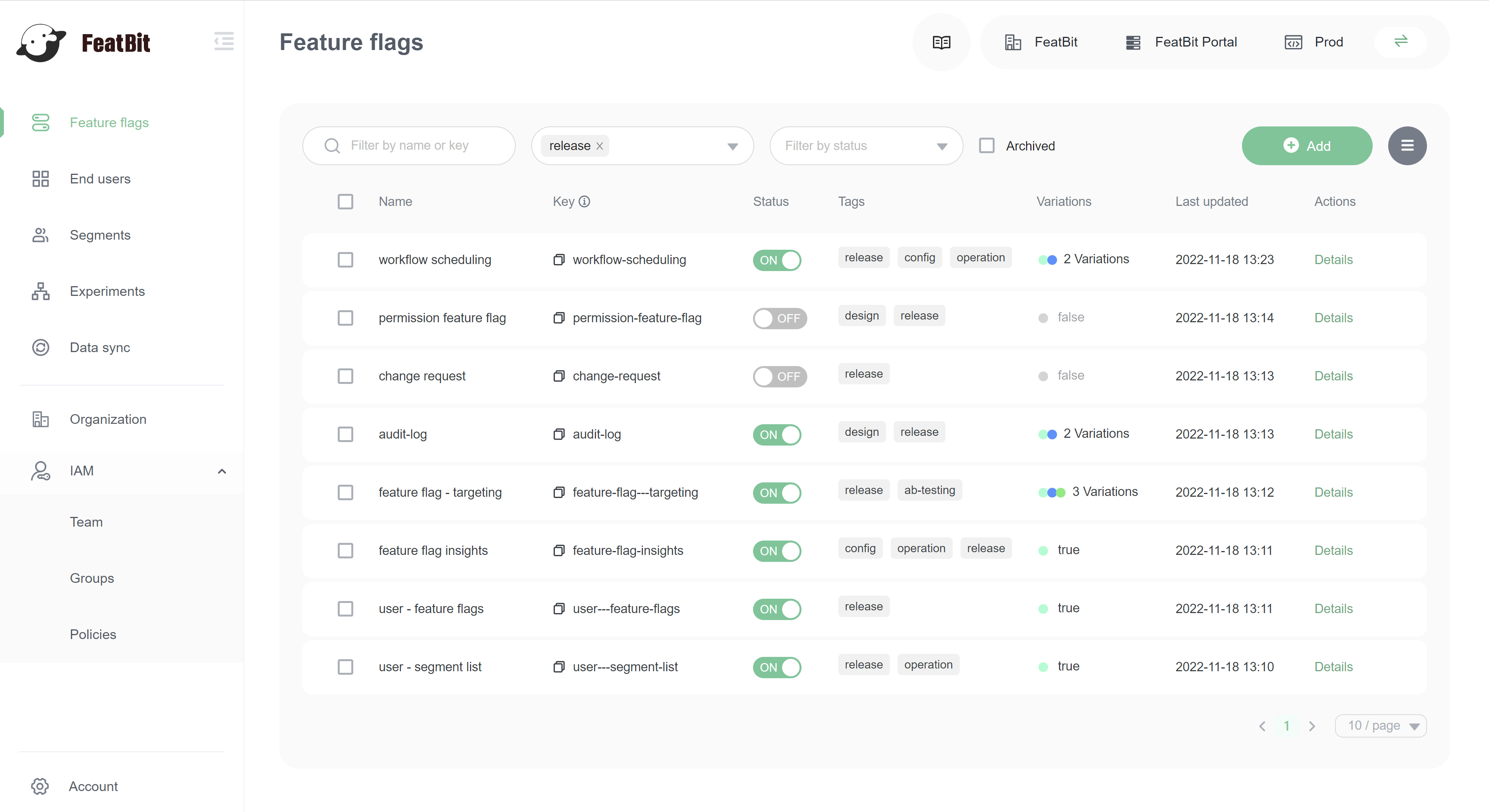Innovate
Your Software
Faster without Risk
Innovate Your Software Faster without Risk
How Feature Flag Management Tools Can Improve Your Development Process

Feature flags (also commonly known as feature toggles) are if-statements in the code base that enable teams to turn features on or off. Feature flags help teams avoid buggy product releases while moving faster, reducing risk, and taking a more experimentation-oriented approach to software development. However, feature flags alone are not enough to manage features at scale. That’s where feature flag management tools come in.
Feature flag management tools provide developers a vehicle for deploying features and changes that can be turned off or on. These tools allow teams to make changes without pushing additional code and allows for more controlled experimentation over the lifecycle of features.
Make secured changes
Feature flag management tools can provide change logs and approval requests to feature flag changes, which can help teams keep track of changes and ensure that they are approved before being implemented. This can help reduce the risk of bugs and other issues that can arise when new features are released to everyone at once.

In addition, change logs can help teams identify issues more quickly by providing a history of changes made to a feature flag. This can help teams identify when a bug was introduced and what changes were made that may have caused it.
Centralized control

Centralized control over all feature flags means that you can manage all your feature flags in one place. This allows you to have a better overview of all your feature flags and how they are being used across different applications and environments. With centralized control, you can easily turn features on or off across all your applications and environments without having to go into each application or environment separately.
This also allows you to have a better understanding of how your features are being used across different applications and environments. You can see which features are being used more frequently and which features are not being used at all. This information can help you make better decisions about which features to keep and which features to remove.
In addition, centralized control over all feature flags allows you to manage your feature flags more efficiently. You can create new feature flags, modify existing ones, and delete old ones all in one place. This saves time and reduces the risk of errors that can occur when managing feature flags across multiple applications and environments.
Another advantage of centralized control over all feature flags is that it allows you to manage access to your feature flags more easily. You can control who has access to your feature flags and what they can do with them. This helps ensure that only authorized personnel have access to your feature flags and reduces the risk of unauthorized changes being made.
Help with technical debt
Feature flag management tools can help reduce technical debt by allowing developers to deploy new features without having to worry about breaking existing functionality. They can turn features on or off as needed, which allows them to test new features in a controlled environment before releasing them to the public. This helps reduce the risk of bugs and other issues that can arise when new features are released to everyone at once.
In addition, feature flags allow developers to make changes without pushing additional code. This means that they can make changes more quickly and efficiently, which helps reduce technical debt.
Fore more read about reducing technical debt with feature flags, please check this article
Use FeatBit to manage your feature flags
FeatBit is a powerful, open-source feature flag management tool specifically designed to help teams incorporate feature flags into their workflows. With an intuitive, user-friendly interface, FeatBit streamlines the process of implementing feature flags, enabling teams to focus on delivering secure, high-quality software at a faster pace.
Please read this document about why you should use FeatBit to manage your feature flags.